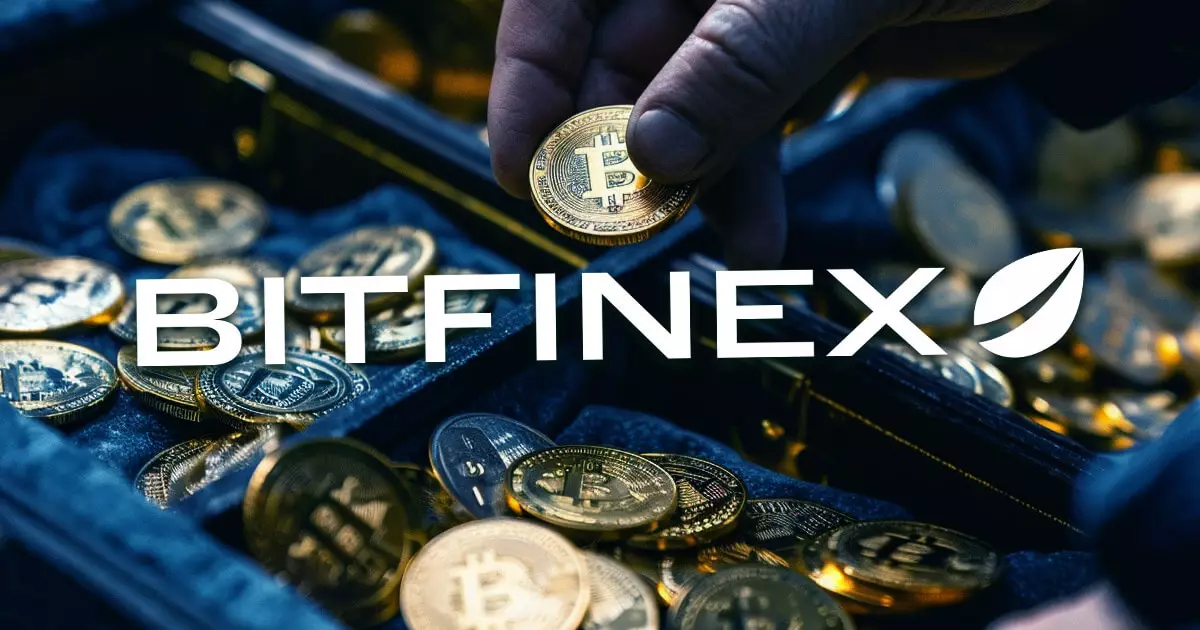In a turn of events surrounding the infamous 2016 Bitfinex hack that led to the theft of approximately 120,000 BTC, a newly released U.S. government document indicates that Bitfinex may be the only entity entitled to restitution. This revelation has sent Bitfinex’s LEO token surging by 14%, indicating renewed optimism among investors. The implications of this ruling raise questions about the dynamics of restitution in the cryptocurrency realm and the potential ripple effects on the involved parties.
The critical excerpt from the legal documentation notes that “The government is not aware of any person who qualifies as a victim under the CVRA or for restitution under the MVRA, beyond perhaps Bitfinex.” This statement positions Bitfinex not just as an affected entity but potentially the sole victim eligible for legal relief. It underlines a significant shift in focus towards the exchange itself, leaving individual account holders in a precarious situation.
This development traces back to the company’s decision post-hack to adjust all customer balances uniformly, reducing them by 36%. In the wake of this drastic measure, Bitfinex opted to distribute BFX tokens to users as a form of compensation. These tokens could be sold or redeemed, offering a temporary lifeline to those who lost funds. By April 2017, all BFX tokens had been redeemed, thus completing Bitfinex’s immediate response to the crisis. However, it is crucial to reflect on how the distributed losses and subsequent compensation have created a complex layer of victimhood.
Bitfinex’s hold on restitution has implications for the legal proceedings surrounding the stolen assets. The case gains further complexity when we consider the funds seized by U.S. authorities in February 2022. At that time, nearly 95,000 BTC—valued around $3.6 billion—was confiscated, presenting a critical opportunity for Bitfinex to recover a significant amount of its losses. Fast forward to present valuations, this recovered amount is now worth an astonishing $5.8 billion.
This recovery process is not merely an exercise in returning stolen assets but involves fulfilling contractual obligations to token holders. Specifically, Bitfinex has issued Recovery Right Tokens (RRTs) to compensate users, with the expectation that recovered funds will be utilized to redeem these tokens at face value. As such, RRT holders are left in a limbo where their investments depend heavily on the success of Bitfinex’s recovery efforts.
The immediate market reaction to the government’s filing was palpable, with Bitcoin itself dipping slightly by 0.7%. Market traders seem apprehensive about the potential influx of the recovered Bitcoin back into circulation. This unease highlights the broader concern of how significant quantities of previously stolen assets—should they reappear—could destabilize an already volatile market landscape. It raises larger concerns about how such recoveries could influence trading behaviors and investor confidence across the crypto sphere.
Additionally, the ruling could streamline future legal proceedings, putting a spotlight squarely on Bitfinex and allowing other potential victims to be excluded from the process. While this may expedite the recovery of assets for Bitfinex, it simultaneously diminishes the chances of redress for individual investors who lost funds in the hack. Such a discrepancy begs the question: who really benefits in scenarios of systemic failure when larger entities like Bitfinex dominate the narrative and the recovery process?
With ongoing collaboration between Bitfinex and law enforcement to recover stolen assets, the path forward hints at a renewed stability for the exchange. However, while Bitfinex is poised to regain a degree of financial health, the focus on token holders—specifically those holding UNUS SED LEO—remains critical. Ultimate distribution of remaining assets following the redemption of RRTs could present opportunities for LEO token holders to reap benefits, albeit indirectly.
The long-term implications for individual users who experienced significant losses highlight a broader dilemma within the cryptocurrency ecosystem, where centralized exchanges grapple with accountability and restitution in the aftermath of breaches. As Bitfinex maneuvers through this turbulent legal landscape, the unfolding narrative serves as a case study on the intersections of law, finance, and ethics in a digital age.
In sum, the aftermath of the Bitfinex hack paints a complex picture of victimhood, recovery, and the undeniable influence of larger exchanges in navigating the tumultuous waters of the crypto world. As legal proceedings unfold, stakeholders—including casual investors—must remain vigilant about their interests and the overarching dynamics at play.
















Leave a Reply